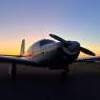Deadstick landing over water
-
Members Online
- ArtVandelay
- TheAv8r
- BrianW
- Stealth Mooney
- Bart Chilcott
- ericrynehess
- Sabremech
- Schllc
- VetRepp
- Flyler
- EarthboundMisfit
- M Terry
- tls pilot
- Paul Thomas
- PT20J
- Skates97
- Chris B
- 76Srat
- JohnnyM
- rklems
- KSMooniac
- Fix
- EricJ
- Hank
- 1967 427
- LANCECASPER
- Bartman
- Mark89114
- redbaron1982
- Jarerh
- takair
- Vintagevalves
- Guy123
- mmcdaniel33


Recommended Posts